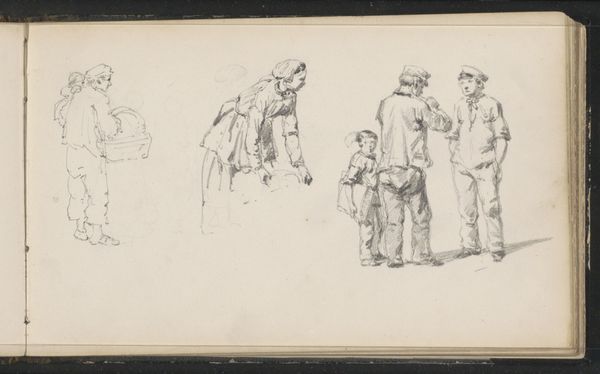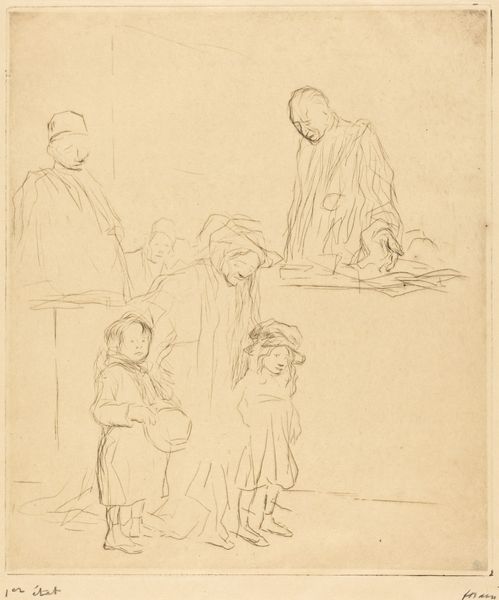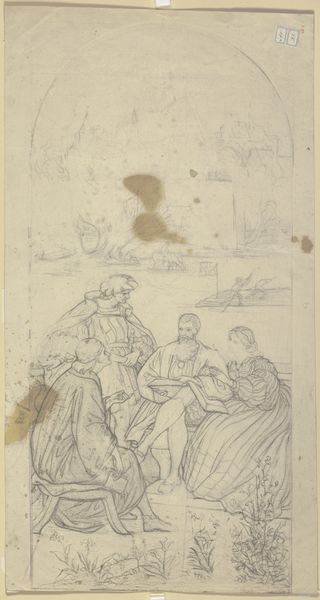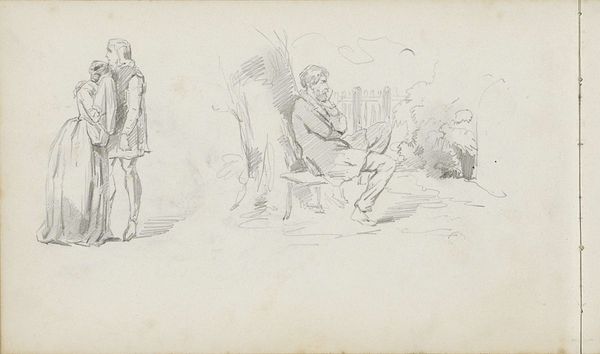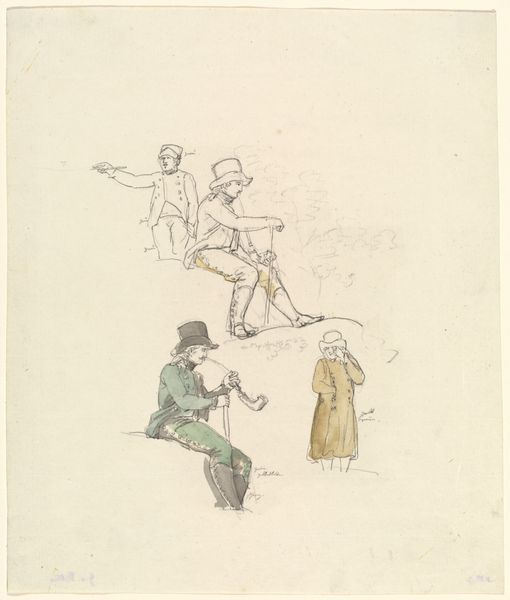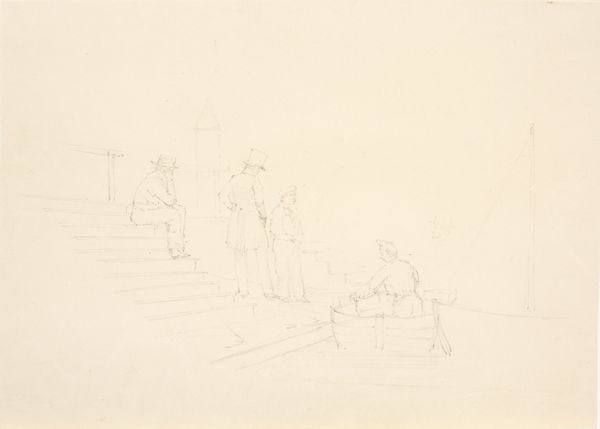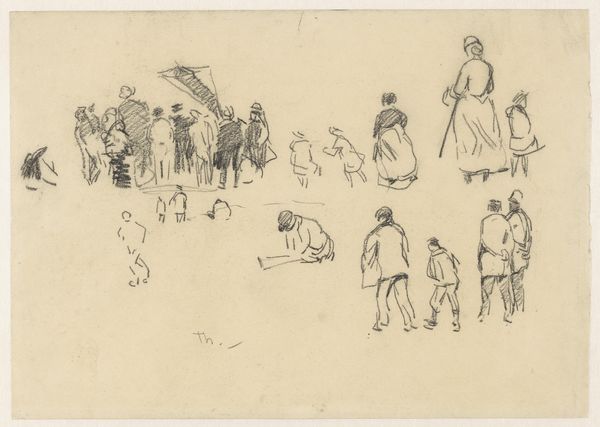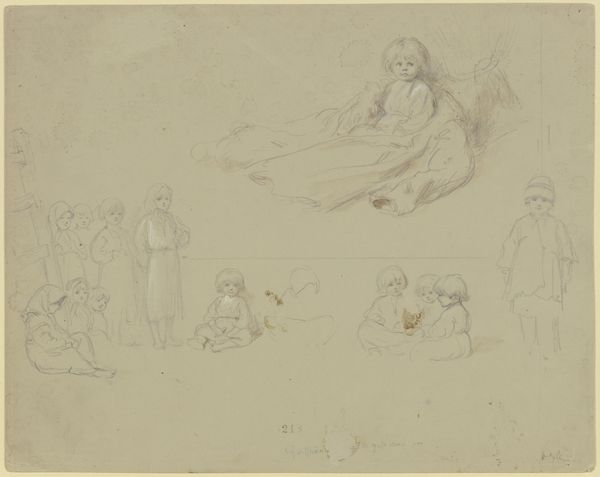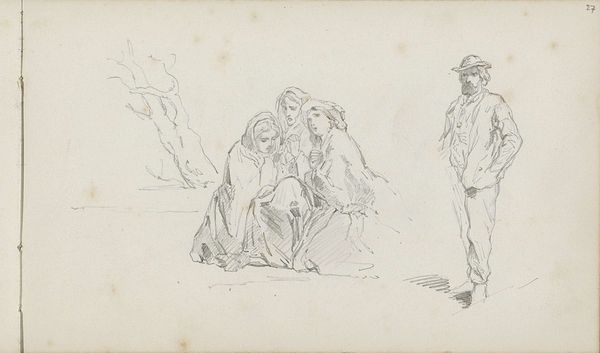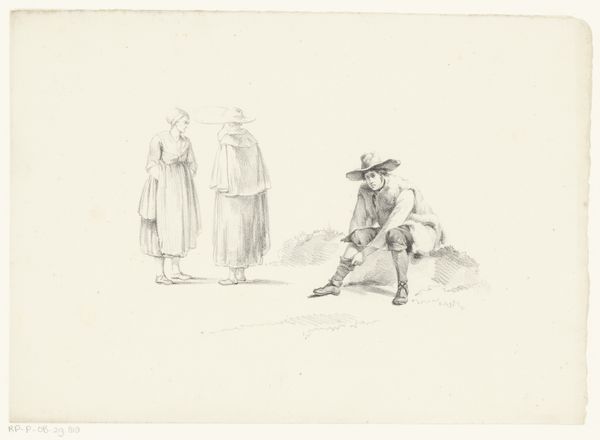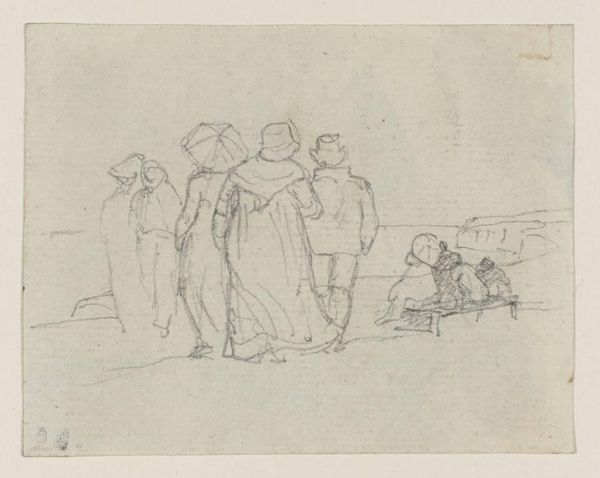
Studienblatt_ verschiedene im Gras stehende und sitzende Figuren
0:00
0:00
drawing, pencil
#
portrait
#
drawing
#
pencil sketch
#
landscape
#
figuration
#
pencil
#
academic-art
Copyright: Public Domain
Curator: What a fascinating sheet of studies by Wilhelm Amandus Beer. The piece, whose full title is *Studienblatt, verschiedene im Gras stehende und sitzende Figuren,* presents a collection of figures sketched in pencil. It's currently held in the Städel Museum. What strikes you most about it? Editor: Its delicate, ephemeral quality. The soft pencil lines give it a feeling of a fleeting moment, a glimpse into everyday life observed rather than meticulously constructed. It feels quite intimate, almost as though we're looking at the artist's personal sketchbook. Curator: Exactly! This type of figure study was common practice in academic art training. Students were encouraged to master depicting the human form in various poses and settings. Editor: So it's less about portraying specific individuals, and more about exploring the artist's command of materials and how different approaches to representing people—standing, seated, in groups, alone—impact the overall design. I wonder about the availability of sketching materials during this time... what pencils would he have had access to? The paper, too. Was it readily available, or a precious commodity? Curator: Excellent points! We also need to consider where this kind of study fits within the larger art market of the time. Academic art held a very particular status within the salons and public institutions, influencing artistic taste and the reception of new work. Understanding the institutional framework helps decode the choices Beer made. What kind of audience was he trying to attract? How did this work signal his professional aspirations? Editor: That also ties into ideas around leisure and observation. He depicts people relaxing in nature. Did the rising middle class, with its increasing access to free time and appreciation of art, play a role in making sketches like these desirable objects, worthy of collecting and display? How much of an art economy fueled those choices of his depictions? Curator: Definitely. The relationship between artist, artwork, and the market is always complex. Looking closer, I think his decision to group studies on a single sheet, a kind of visual inventory of figural motifs, perhaps catered to an art market keen on works demonstrating skills in draftsmanship. It also would offer insight on their labor involved. Editor: Indeed. This seemingly simple study reveals layers upon layers of artistic and societal contexts! Curator: A testament to how even seemingly modest artworks can illuminate broader cultural and historical trends. Editor: It certainly makes me appreciate the power of a humble pencil.
Comments
No comments
Be the first to comment and join the conversation on the ultimate creative platform.
